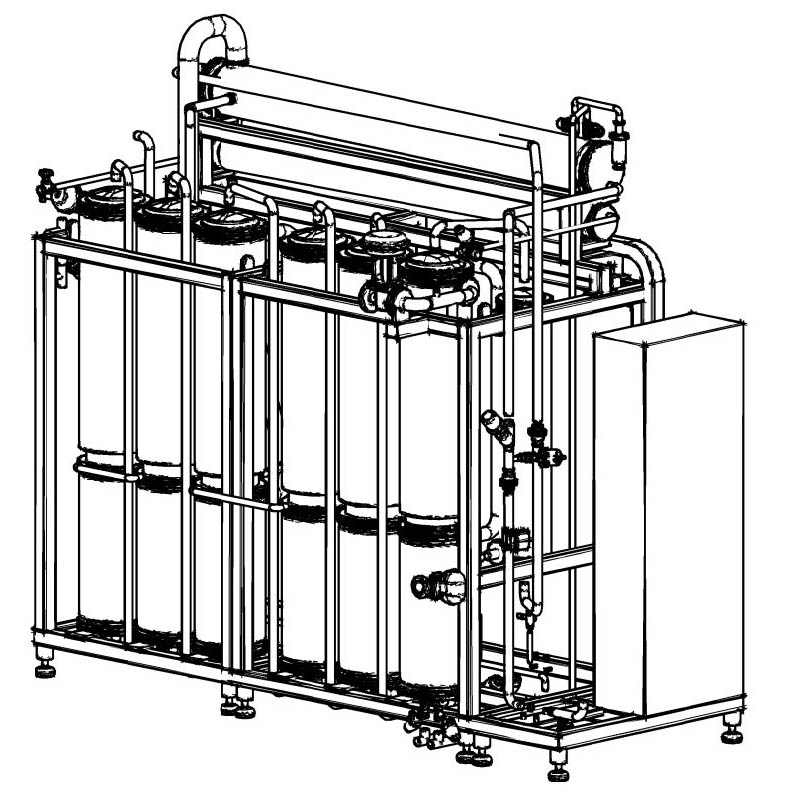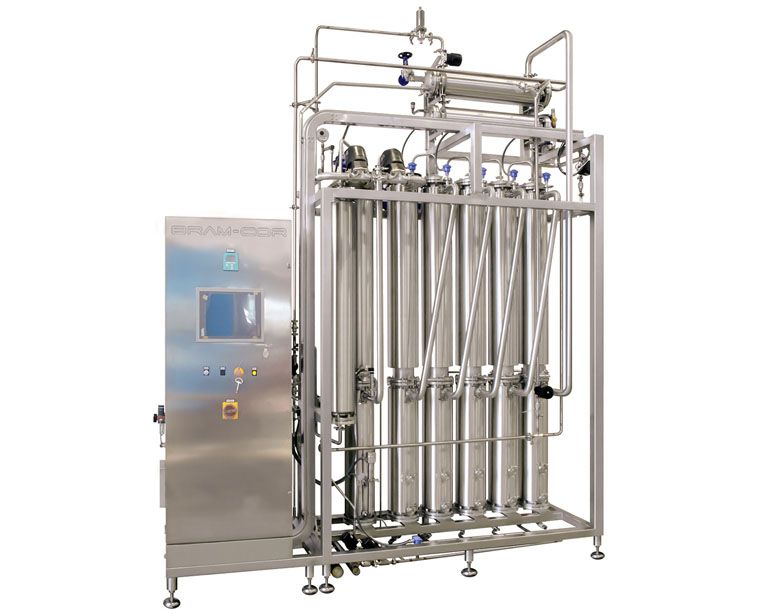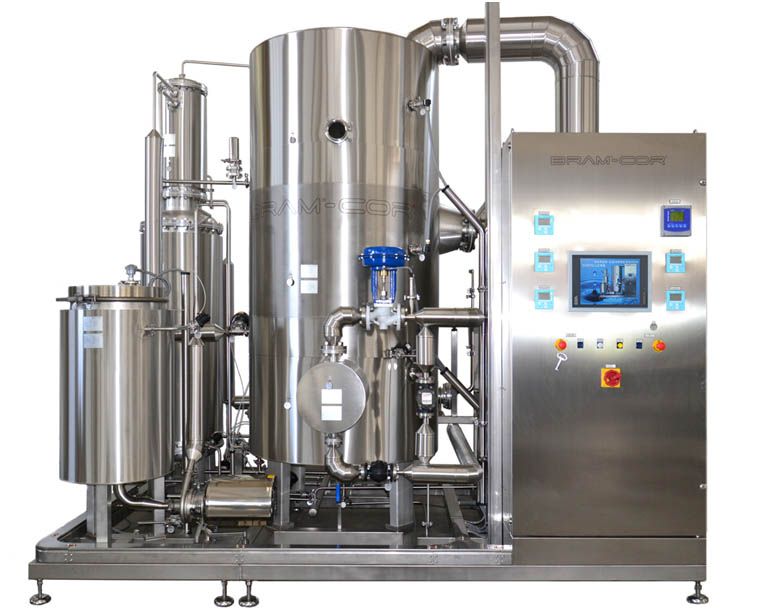WATER FOR INJECTIONS (WFI) GENERATION SYSTEMS

Water for injection (WFI) may be obtained nowadays by one of the following ways:
- thermal distillation
- vapor compression distillation
- combination of reverse osmosis, electrodeionization and ultrafiltration methods
THERMAL DISTILLATION
Thermal distillation, single or multi-effect, is the most popular method of Water For Injections (WFI) generation in Europe. The main advantage of this method is the reliability resulting from the design simplicity in which moving parts are not used in the process of WFI water generation. Due to the fact that the process is carried out at high temperature, this method gives complete confidence in the microbiological purity of the water obtained.
The source for WFI generation by thermal distillation is usually Purified Water. The feed water for the thermal distiller must meet at least the European Pharmacopoeia quality attributes for the PW. However, it is recommended that the feed water meets USP PW quality requirements. Feed water should contain the lowest possible concentration of non-condensable gases. The best quality of feed water will certainly extend the life of the distiller, as well as reduce the frequency of service associated with unit cleaning/derouging and/or repairing.
The process of thermal distillation is basing on evaporation and subsequent condensation of the feed water. The source of energy used to heat and evaporate the water in the process of thermal distillation can be technical steam under pressure of 4-8 bar or electric energy. In fact, electric distillers are used only for equipment of small capacity, usually not exceeding 200 L/h.
Thermal distiller for Water For Injections generation may consist of one or more, from 2 to 8, evaporation columns. The number of distillation columns also determines the number of distillation effects (therefor, the term "multi-effect distillation"). The increase in the number of columns leads to decrease of utilities consumption, and consequently, the operating costs of the unit decrease, while the investment costs increase. Equipment of small capacity - up to 100 L/ h - are most often designed as single-effect units. The bigger the WFI capacity of the unit is, the number of distillation effects is usually higher.


DISTILLATION BY VAPOR COMPRESSION.
Vapor Compression Distillers (VCD) use the phenomenon of vapor condensation pressure, in which, in accordance with the Clapeyron equation, vapor condensation occurs at a temperature exceeding the temperature at atmospheric pressure. In addition, vacuum is generated in the VDC distillers in the feed water chamber, leading to water evaporation at a lower temperature than the temperature at atmospheric pressure.
VDC distillers have several very important advantages:
- low consumption of technical steam
- required industrial steam pressure is only 3 bar
- does not require water for cooling
- non-condensing gases are very effectively removed in the VC process
- deterioration of feed water quality has practically no effect on the quality of the resulting WFI water
- softened water may be the raw material for WFI water
The disadvantages of VDC distillers include:
- high power consumption
- the presence of moving parts
- the need for regular maintenance work - replacement of bearings of the blower
VCD distillation is a very popular way to generate Water For injections in the United States. In Europe, this method is definitely less popular, mainly due to the presence of moving parts in the unit. However, it is worth considering the application of the VCD method in all cases where we are interested in a not-too-energy-intensive solution, when we are dealing with low industrial steam pressure available, high capacity of WFI generation demand or lack of cooling water source.
COLD WFI GENERATION BY THE MEANS OF MEMBRANE TECHNOLOGIES
Water For Injections cold mode of generation using membrane methods has been approved for many years in the United States. Until now, European legislation has been more conservative, considering distillation the only acceptable method of obtaining WFI. However, Supplement No. 9.1 to the European Pharmacopoeia as of April 2017 allowed using methods other than distillation for the production of Water for injections. This document lists: single- and double-stage reverse osmosis in combination with electrodeionization, ultrafiltration, or nanofiltration.
Given the need of almost complete desalination of water in the process of WFI generation and ensuring complete microbiological purity, the optimal cold WFI production line will most often consist of the following purification steps: reverse osmosis - electrodeionization - ultrafiltration. Depending on the degree of salinity in the feed water, the reverse osmosis section can be single- or double-stage. Feed water for reverse osmosis, of course, must be preliminarily subjected to an appropriate pre-treatment process, just like for PW generation systems.
In all cases membrane methods are used to generate Water For Injections in cold process, special attention should be paid to the careful design of periodic sanitation process. Cold processes are always more exposed to risk of microbiological contamination than traditional thermal distillation. Periodic sanitation of cold WFI generation equipment should be carried out on regular basis, preferably by thermal method.
Despite the recent changes in the standards of the European Pharmacopoeia, most likely, thermal distillation will remain the most common method to generate Water for Injection due to its reliability and microbiological safety. However, generation of WFI by the means of membrane technologies may be an interesting alternative, especially when there is no industrial steam in the facility available or when the process requires bringing cold WFI to the points of use. In this case, it is worth considering to combine the generation of WFI in cold mode with storage and distribution under ozone generated by a pharmaceutical electrolytic ozone generator.